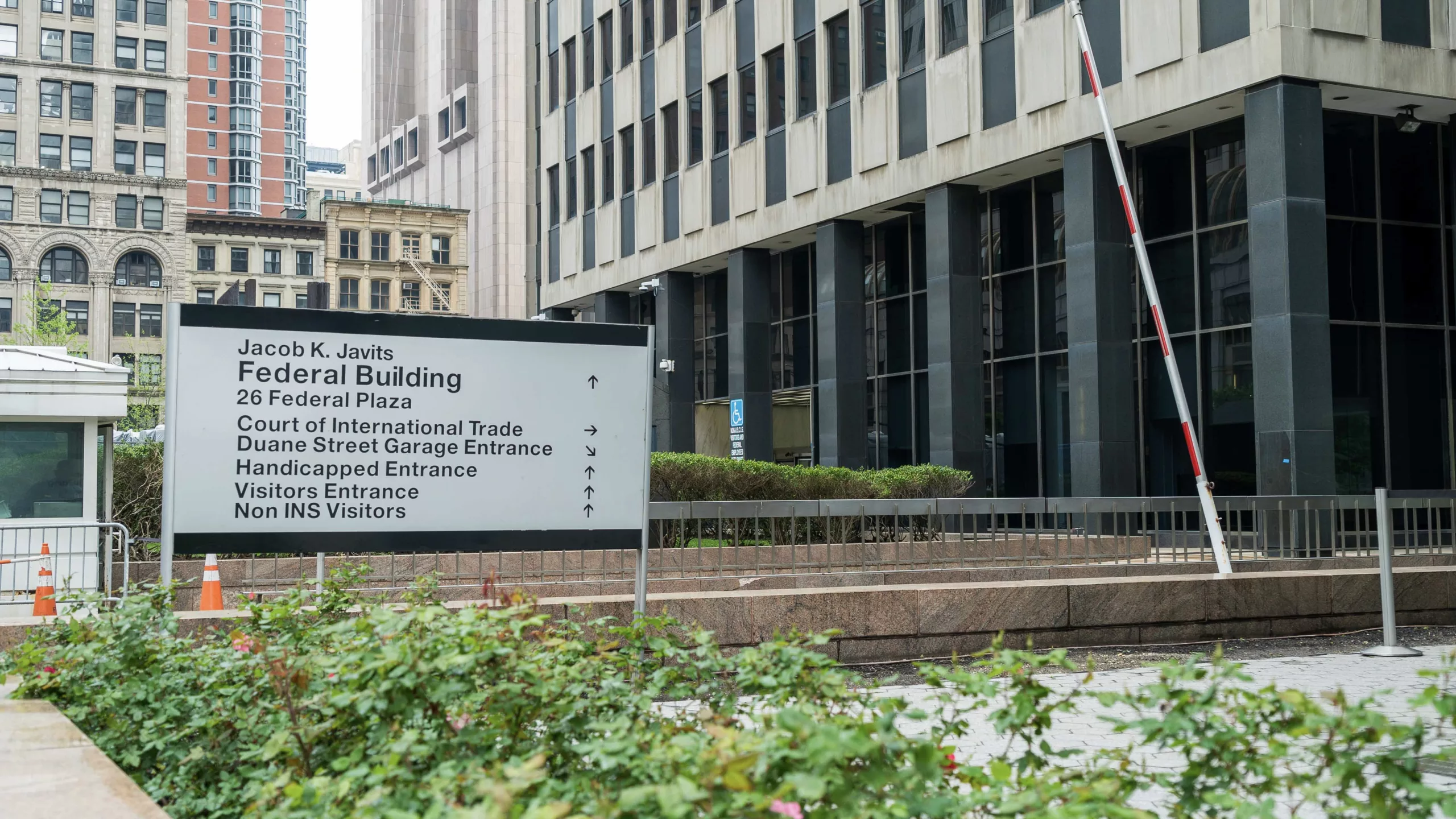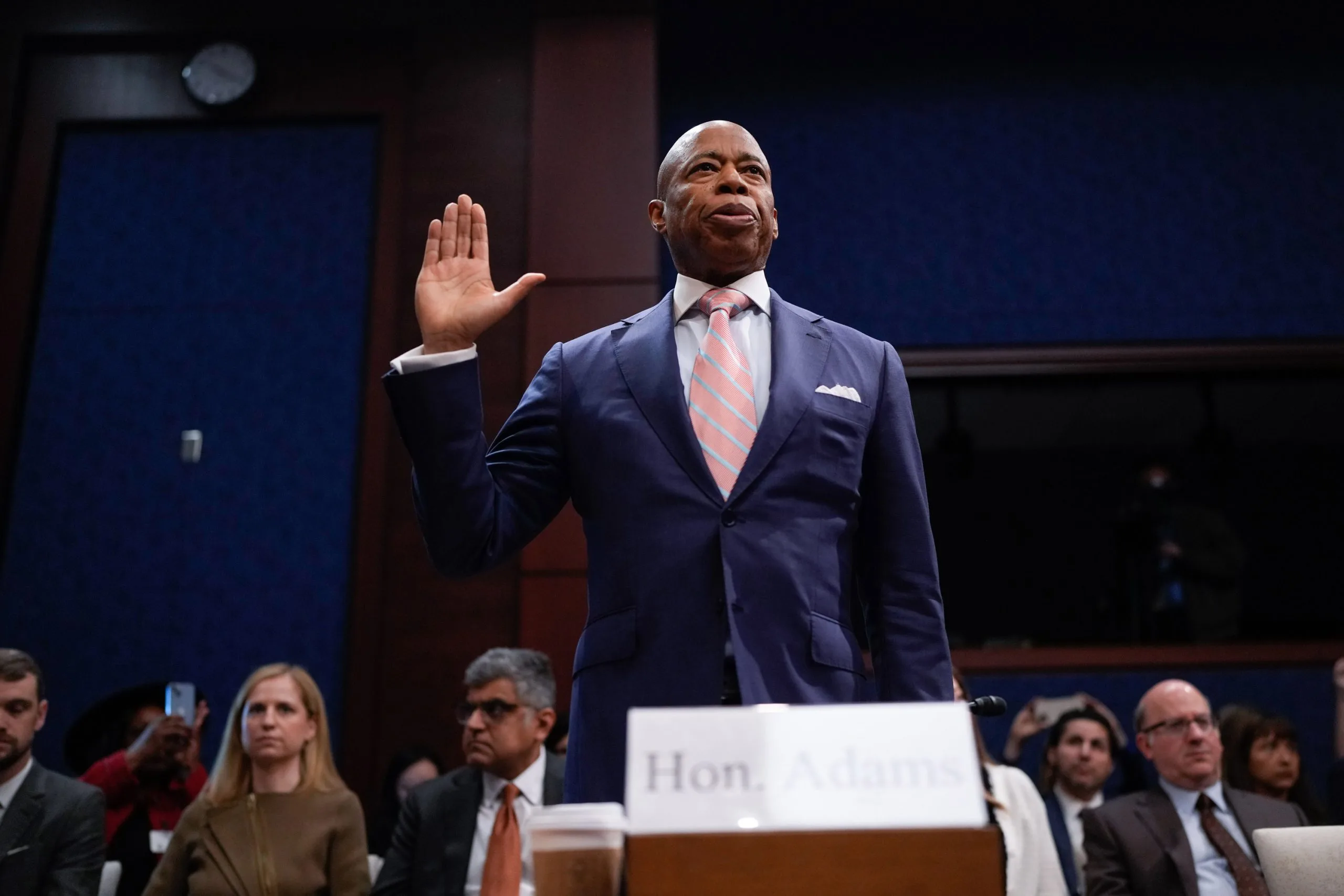At the beginning of summer 2023, Clinton Hill, a neighborhood in Brooklyn, embraced thousands of asylum seekers when a shelter opened at 47 Hall St. through the city’s emergency response program. The residents organized coat drives, resource fairs, and food donations for the newcomers.
However, when a second shelter opened nine months later without their knowledge, Clinton Hill became a point of dispute as longtime residents began protesting the shelters, citing concerns of overpopulation and public safety, particularly after a series of shootings that took two lives including a shelter’s resident.
Signs reading “Shelters are not helping the neighborhood,” “New York is not the only sanctuary city,” and “Taxpayers first” have become common at town halls and rallies. The protests have occurred amid the heightened focus on immigration in the 2024 presidential elections, and as New Yorkers have begun questioning the state’s identity as a sanctuary city with the arrival of 200,000 migrants over the past two years, many of whom were bussed by other states. Approximately 60,000 have remained under the city’s care.
Also Read: When Government Bureaucracy Fails Them, a Collective of Indigenous Migrants Figure It Out Themselves
“Let me clarify, we are not against immigrants,” Clinton Hill resident Jorge Santos, 61, said during a rally in June. “We welcome them, but we do need better communication from the representatives.”
The second shelter’s opening in April brought the number of asylum seekers to approximately 3,500 in the neighborhood. Residents pressed local officials to reduce the size of the Hall Street shelter noting public safety concerns and the need for better living conditions for migrants.
Santos, whose parents emigrated from Cuba during the ‘60s, has been living in Clinton Hill since 2002. He told Documented that Clinton Hill residents welcomed the migrants and have provided essential resources to them, but he said the opening of a second shelter without the knowledge of the community undermined the tax-paying residents of the neighborhood.
The city opened the shelter because they were “tolerant people,” he said, adding that if the residents were anti-immigration or anti-immigrant they would have resorted to protesting and demanding the shelters close as opposed to asking for smaller sized shelters throughout the city. “We want to welcome them but you can’t just abandon them here in these conditions,” he reiterated. “All of this is on us.”
On May 6, Council member Crystal Hudson (D-35) wrote a letter to Mayor Eric Adams asking for more support to help with the increased population, writing: “More people means more trash, greater use of public facilities like parks, and more neighborly disputes around issues like noise or loitering. My office and my neighbors have been asking for your assistance for the better part of a year to no avail.” She noted the difference in budget and personnel available to the district when compared to the city’s number of employees and the funds.
Hudson told Documented that their office learned about the shelter’s opening a few days in advance. “We were not notified when the Adams administration selected the shelter site, hindering our ability to work with the administration to notify community members or create a contingency plan to proactively address our community’s concerns,” she said. Hudson’s office submitted legislation in February that would require an improved notification system for all city-sited properties. Two months later, Hudson’s office had not received a formal response from the mayor, Hudson said. However, Camille Joseph Varlak, the mayor’s Chief of Staff, said during a press conference on July 23, that the administration is looking for ways to “reduce the footprint of some of the largest shelters,” including Floyd Bennett Field, Randall’s Island and Hall St. into smaller shelters.
Still, Santos and other residents feel that Hudson has not done enough to stand up for the community, with some saying that they have seen more trash in the area near the shelters. Santos said that he has seen more trash on the streets, especially under the BQE. He said that the community has been left on their own to deal with it. “I will never vote Republican, but I am looking for alternatives in the Democratic party,” he said.
The debates surrounding Clinton Hill’s migrant shelters have drawn attention across the political spectrum, including state Attorney General Leticia James, a resident of the district, and Curtis Sliwa, who ran for mayor in 2021 and made headlines after his group the Guardian Angels took down a Bronx resident after misidentifying him as a migrant.
30 days to get their life together

On the sunny evening of June 14, a group of Clinton Hill residents held a press conference at the corner of Flushing Avenue and Hall St. The green storage building, which otherwise stands desolate, was loud with around 40 protesters demanding the 47 Hall St. shelter to reduce its size.
Standing across the street, separated by the stretch of Hall Street, more than one hundred migrants — from South America, Caribbean, and Morocco — watched with bewilderment as the speakers took turns calling out politicians and demanding better living conditions for the migrants.
Ezequiel Mendoza, a 49-year-old migrant from Colombia, told Documented that the conditions at the shelter could be better but that he is grateful for what they have provided. He said he is hoping to secure a work permit so he can start working, and eventually leave the shelter. “That [lack of work permit] is what keeps someone tied up here, because there have been other people who as soon as they get their work permit, they go their separate ways,” he said in Spanish.
Also Read: Newly Arrived Migrants Encounter Hazards of Food Delivery on the Streets of NYC: Robbers
Mendoza has been in the U.S. for one year, originally settling in Virginia before coming to New York two months ago. He said that he was working in Washington D.C. doing construction and got injured during a shift, which has prevented him from working manual labor jobs. He also said that no one in the U.S. has given him information about how to navigate the immigration system, adding that he recently found out that he had an order of deportation that had been given to him by an immigration judge.
“There are organizations helping you along the journey here, like HIAS [Hebrew Immigrant Aid Society] and IOM [International Organization for Migration], but as soon as you get here no one helps you,” he said.
The June press conference was organized by Renee Collymore, a local resident active with the Brooklyn Democratic Party who also ran for City Council District-35 seat in 2021. Collymore told Documented that her advocacy for the neighborhood is not politically motivated and that she has been speaking out for her neighborhoods since she was a child. “Those that say that have not spent their lifetime fighting and cleaning up the neighborhood,” she said, adding that her father owned a business in the neighborhood for 45 years.
Collymore said the residents of Clinton Hill demand better communication from Hudson to ensure that a plan to welcome the migrants to the neighborhood is done in a sustainable manner. “We all love to say we are a humanitarian, but you are not a humanitarian if you are okay with 47 Hall Street,” Collymore said, referring to the overpopulation of migrants and the living conditions inside the shelter.
The protestors, Collymore said, are demanding different types of housing dispersed throughout the neighborhood that could better the circumstances of the migrants living in the shelters. “Anybody who lives closely with other people around the clock, that increases their anger, it increases their frustration, it increases the stress level is not healthy for the migrants, as it is not healthy for the community.”
Cries for smaller shelter sites have increased following a recent series of shootings near the shelter, as reported by Gothamist. “The neighbors are telling me they are okay with the smaller shelter at 29 Ryerson Street, which houses approximately 800 migrants. That is manageable. But 47 Hall Street? That’s the problem, ” she said, adding that it is Hudson’s responsibility to deal with budgeting and land use.
During the press conference, other Clinton Hill residents echoed Collymore’s demands for better living conditions for the migrants at the shelters.
The Mayor’s office did not return Documented’s request for comment.
“We are one human race,” Mary Chang, 74, said when she took the microphone, demanding better conditions for the asylum seekers in the shelter. “They have told us that it is like a prison.”
Chang is a first generation American and has lived in the district all of her life. She told Documented what she wishes for is better living conditions for the residents and has always been fighting for migrants. Chang’s father is from China and she also has family in Colombia. “It’s not about ‘not being in my backyard,’ it is about finding solutions,” she said.
One of the issues Chang mentioned is also the 30- and 60-day rule which was implemented by the Adams administration that requires immigrants to reapply for shelter after that time has passed. “Where are you gonna go after 30 to 60 days? Do you think you could get your life together? I know I couldn’t. I have been homeless and I know what it feels like. I lost my place, not the way they did, but I did not have my place,” Chang said, who now owns a home on Hall Street.
Chang, whose son is married to someone from Colombia, approached Mendoza and introduced herself. “We want better for you. We want people to come and help you with work, with food, no more to the 30 day rule” she told him with a mix of Spanish words interwoven in between. Mendoza replied in Spanish, saying that six months — while they get their work permit — would be an ideal time to be able to remain in the shelter.
“I am from Leticia, in the Amazons,” Mendoza said, to which Cheng replied, “My granddaughter’s name is Leticia, too.”
This story was produced as part of the 2024 Elections Reporting Mentorship, organized by the Center for Community Media and funded by the NYC Mayor’s Office of Media and Entertainment.















